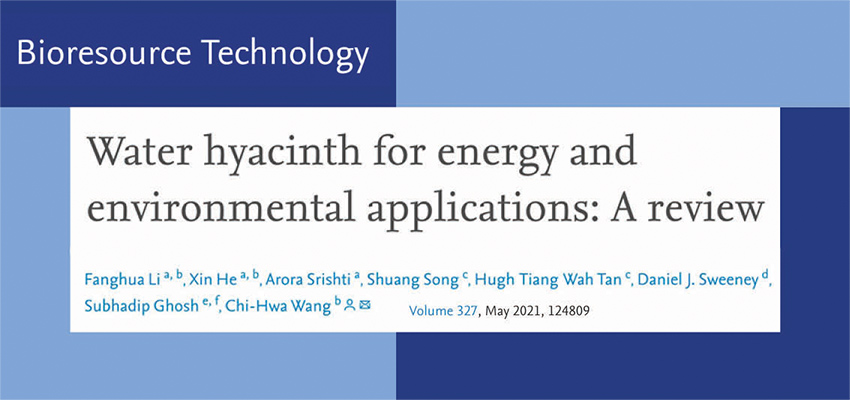
Published by Bioresource Technology Journal
Water hyacinth for energy and environmental applications: A review
Abstract
This review is focused on the sustainable management of harvested water hyacinth (WH) via thermochemical conversion to carbonaceous materials (CMs), biofuels, and chemicals for energy and environmental applications. One of the major challenges in thermochemical conversion is to guarantee the phytoremediation performance of biochar and the energy conversion efficiency in biowaste-to-energy processes. Thus, a circular sustainable approach is proposed to improve the biochar and energy production. The co-conversion process can enhance the syngas, heat, and energy productions with high-quality products. The produced biochar should be economically feasible and comparable to available commercial carbon products. The removal and control of heavy and transition metals are essential for the safe implementation and management of WH biochar. CMs derived from biochar are of interest in wastewater treatment, air purification, and construction. It is important to control the size, shape, and chemical compositions of the CM particles for higher-value products like catalyst, adsorbent or conductor.
Contact
Dan Sweeney, MIT D-Lab Research Scientist, Biomass Fuel and Cookstoves Lead

